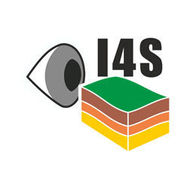Crop growth and soil water fluxes at erosion‐affected arable sites: Using weighing lysimeter data for model intercomparison (2020.0)
Groh J., Diamantopoulos E., Duan X., Ewert F., Herbst M., Holbak M., Kamali B., Kersebaum K., Kuhnert M., Lischeid G., Nendel C., Priesack E., Steidl J., Sommer M., Pütz T., Vereecken H., Wallor E., Weber T., Wegehenkel M., Weihermüller L., Gerke H.
Vadose Zone Journal, 19 (1),
Abstract
Agroecosystem models need to reliably simulate all biophysical processes that control crop growth, articularly the soil water fluxes and nutrient dynamics. As a result of the erosion history, truncated and colluvial soil profiles coexist in arable fields. The erosion-affected field-scale soil spatial heterogeneity may limit agroecosystem model predictions. The objective was to identify the varia-
tion in the importance of soil properties and soil profile modifications in agroecosystem models for both agronomic and environmental performance. Four lysimeters with different soil types were used that cover the range of soil variability in an erosion-affected hummocky agricultural landscape. Twelve models were calibrated on crop phenological stages, and model performance was tested
against observed grain yield, aboveground biomass, leaf area index, actual evapotranspiration, drainage, and soil water content. Despite considering identical input data, the predictive capability among models was highly diverse. Neither a single crop model nor the multi-model mean was able to capture the observed differences between the four soil profiles in agronomic and environmental vari-
ables. The model’s sensitivity to soil-related parameters was apparently limited and dependent on model structure and parameterization. Information on
